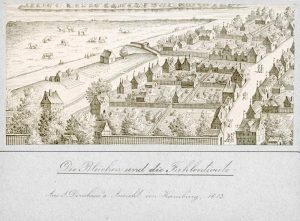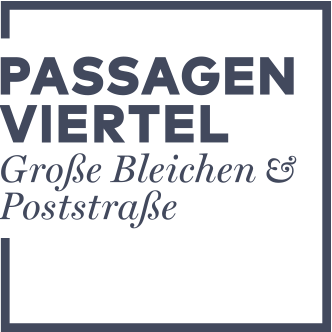1700
1700
Odour Control
Back in the 18th century Neustadt was not exactly a sought-after neighbourhood, not least because of the intense odours emanating from numerous workshops and factories.
Around 1700 Neustadt was full of brick factories, powder and tanbark mills as well as tanneries. While these trades were vital to the local economy, they were also very smelly. In addition, there was a dedicated graveyard for plague victims. The area was sparsely populated in those early days and started to attract members of the middle and working classes only when it was included in the city’s expanded fortification plan.

Between 1718 and 1750 the Grosse Bleichen street was created on the Bleichwiesen (»Bleich« being the German word for »tan«). The adjoining cross street was initially called »Blekerkamp«, then became »Neue Gärberstrasse« and later »Königstrasse«. The first stretch of the street was given today’s name, »Poststrasse«, only after completion of the »Alte Post« municipal post office. In 1953 its full length was renamed »Poststrasse«.
